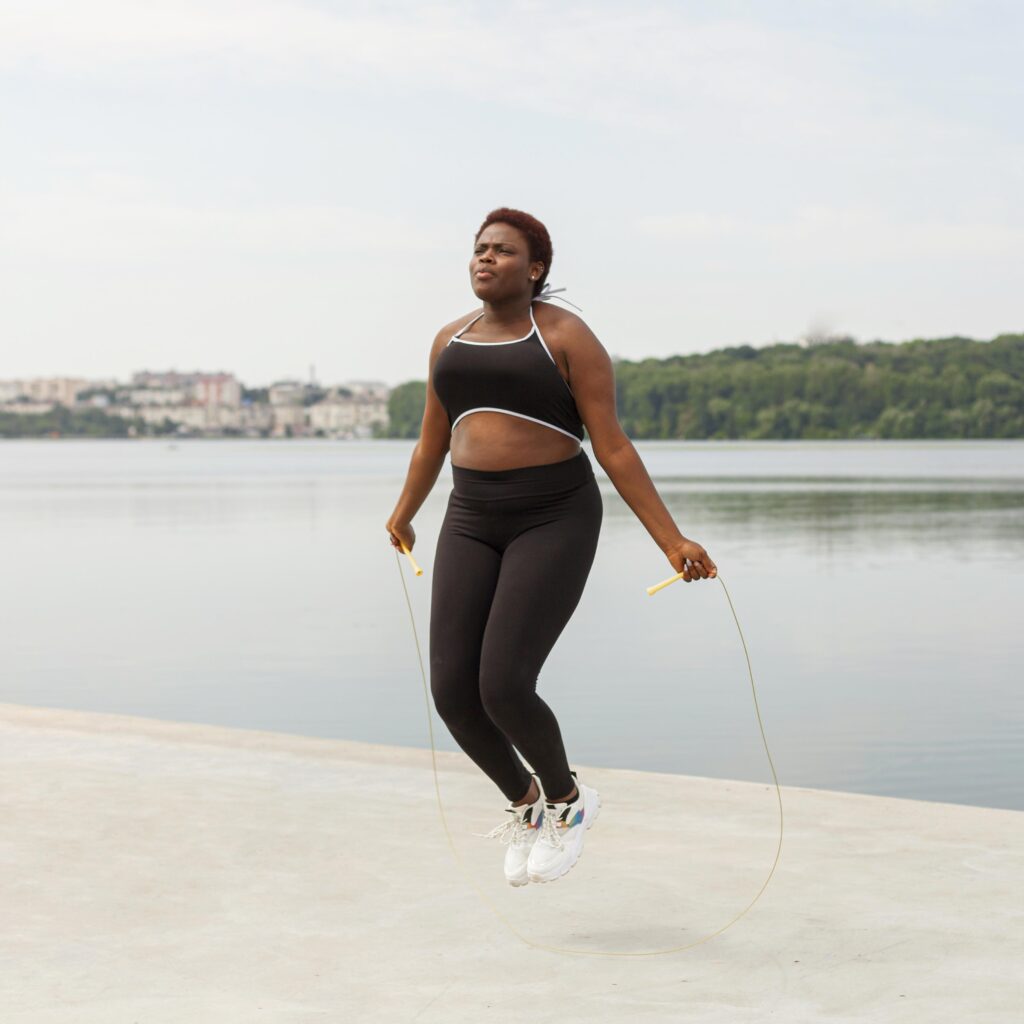Regarding cardiovascular exercise, two popular choices are jumping rope and running. Both are excellent ways to improve your fitness, burn calories, and boost your mood. But is one better than the other? Let’s dive into the benefits and drawbacks of each to help you decide which might be best for you.
Benefits of Jump Rope
Efficiency – Jumping rope is an incredibly efficient workout. You can burn a lot of calories in a short amount of time. A vigorous 10-minute jump rope session can burn as many calories as running an 8-minute mile.
Full-Body Workout – Jumping rope engages multiple muscle groups, including your legs, core, shoulders, and arms. This makes it a great full-body workout.
Improves Coordination – Jumping rope requires good coordination and timing, which can improve your overall athleticism and agility.
Portable and Inexpensive – A jump rope is a very affordable piece of equipment and can be easily carried anywhere, making it perfect for travel or home workouts.
Low Impact – When done correctly, jumping rope can be gentler on the joints than running, especially if you use a soft surface like a mat or grass.

Benefits of Running
Cardiovascular Health – Running is one of the best ways to improve cardiovascular health. It strengthens your heart and lungs, reducing the risk of heart disease and improving overall endurance.
Mental Health Benefits – Running has been shown to reduce symptoms of depression and anxiety. The release of endorphins, often referred to as a “runner’s high,” can boost your mood and mental well-being.
Weight Loss – Running is an effective way to burn calories and can help with weight loss. It’s a high-intensity workout that can help you shed pounds when combined with a healthy diet.
Bone Density – Weight-bearing exercises like running can improve bone density and strength, reducing the risk of osteoporosis.
Accessibility – Running doesn’t require any special equipment beyond a good pair of running shoes. You can do it almost anywhere, from city streets to trails in the woods.

Drawbacks of Jump Rope
Learning Curve – Jumping rope effectively requires good technique and coordination. Beginners might find it challenging to get the hang of it initially.
Space – While portable, you do need a bit of space to jump rope safely. This can be a limiting factor if you’re in a confined area.
Repetitive Motion – The repetitive nature of jumping can lead to overuse injuries if not done correctly or if done excessively without proper rest.
Drawbacks of Running
Impact on Joints – Running, especially on hard surfaces, can be tough on your joints, leading to issues like shin splints, knee pain, and other overuse injuries.
Weather Dependent – Running outdoors is weather-dependent. Rain, snow, or extreme heat can make running uncomfortable or even dangerous.
Monotony – Some people find running monotonous and may struggle to stay motivated over time.
Which One Is Better?
The answer to whether jumping rope or running is better depends on your personal fitness goals, preferences, and any physical limitations you might have.
Choose Jump Rope If –
You want a quick, high-intensity workout.
You’re looking to improve coordination and agility.
You need a portable workout option.
You want a lower-impact exercise for your joints.
Choose Running If –
You enjoy outdoor workouts and exploring different routes.
You’re looking to improve cardiovascular endurance.
You want to take advantage of the mental health benefits of longer, steady-state exercise.
You’re interested in building bone density through a weight-bearing exercise.

Ultimately, the best exercise is the one you enjoy and can stick with consistently. Both jump rope and running offer unique benefits, so you might even consider incorporating both into your fitness routine for a balanced approach.

